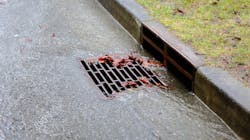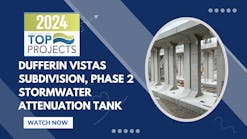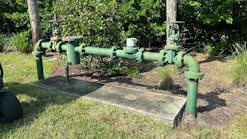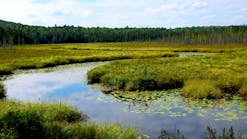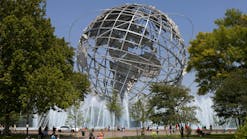The most contentious policy issue currently in the water sector is the Waters of the U.S. (or WOTUS) rulemaking, with its constant back-and-forth dynamics. While the 2015 version of the WOTUS regulations under the Obama administration expanded the jurisdictional universe of waters defined as a WOTUS, the 2020 version under the Trump administration reduced this coverage significantly, including eliminating ephemeral streams from inclusion under the legislation. In the stormwater sector, the most significant WOTUS issue is the exclusion of stormwater management infrastructure from being considered under the rule.
The specific concern relates to scenarios where a stormwater practice — such as a stormwater pond — that was originally constructed to meet regulatory requirements may be viewed as a natural body of water to those unaware of the original intent of the practice. As such, further definition is required. Considering that there are well over a million stormwater control measures across the U.S. by one estimate, the burden to regulators to address confusion over these scenarios would be overwhelming and a strain on limited resources. Also, the focus on nature-based practices — namely green stormwater infrastructure — makes these scenarios all the more likely to arise.
The currently proposed rule out for comment rolls the definition back to the pre-1986 WOTUS ruling — which does not include an exclusion for such stormwater control features. The National Municipal Stormwater Alliance (NMSA) and other groups have voiced the need for this exclusion, so it is hoped that this uncontentious issue is resolved in the final rulemaking.
Another regulatory program that MS4s should keep their eye on is the Electronic Reporting (or E-Reporting) Rule. The first phase of this rule has been completed, so EPA is currently engaged in the second phase, which includes MS4s with the premise that all MS4 permit compliance documentation will be required to be provided in a digital format by December 21, 2025 (note that “digital format” means data in a spreadsheet or database as opposed to simply transitioning paper reports to PDF documents). While this is four years away, the process of shifting regulatory documentation for entire states or municipalities is not quickly or easily done, so this is a relatively short period of time in this context. Also, this date was initially set for December 21, 2020, so an additional extension is not likely.
A final topic to consider tracking is the Clean Watersheds Needs Survey (CWNS), an effort led by EPA and state regulatory programs periodically to capture the capital investment needs in the Clean Water sector.
EPA has developed a costing tool that enables a community to provide basic information about a stormwater practice (such as the size of the stormwater control measure (SCM) footprint and the type of SCM) to generate an estimated cost.
Also, EPA has developed a list of accepted documents that can be used to estimate capital needs for stormwater, which include watershed plans, stormwater utility feasibility studies, capital improvement plans, climate resilience evaluations, and many other similar types of documents. EPA is also allowing states to develop their own approaches to estimating stormwater needs. Each state has an assigned state CWNS coordinator, who is the point of contact for communities and utilities in their state. This coordinator leads efforts to develop these “state approaches” along with other support in their state. This flexibility reflects EPA’s recognition that states vary in their approaches to tracking stormwater infrastructure needs.
With the significant increases in funding authorized in the Infrastructure Investment and Jobs Act of 2021 for the SRF and OSG programs, the incentive for states and communities to report stormwater needs is more urgent than ever. NMSA is working with EPA staff to perform outreach and engagement with states and MS4s to ensure that stormwater needs are identified and captured in the CWNS. SW
Seth Brown is Executive Director of the National Municipal Stormwater Alliance (NMSA). Since forming in 2018, NMSA has made significant contributions to the stormwater/MS4 sector through policy leadership, state and regional engagement and support, technical information development and dissemination, and raising the awareness and profile of stormwater overall. Learn more at www.nationalstormwateralliance.org.
Published in Stormwater magazine, February 2022.
Seth Brown
Seth Brown has over 25 years of experience in the water sector and is the Principal and Founder of Storm and Stream Solutions, LLC, a consulting firm providing a range of services from policy and alternative project delivery analysis in the stormwater sector to facilitation and training services focused on stormwater topics. He was the Director of Stormwater Programs at the Water Environment Federation from 2010-2015 and is currently the Executive Director of the National Municipal Stormwater Alliance, which is a 501.c.3 representing stormwater-focused organizations in 24 states across 9 of the 10 U.S. EPA regions with a network that is comprised of over 4,000 MS4s.
Seth has a Ph.D. in civil engineering from George Mason University with a research focus on socio-economic modeling of incentive-based investments of green stormwater infrastructure on private properties. He leads courses in Green Infrastructure and Innovative Water Partnerships at Virginia Tech and the University of Maryland at Eastern Shore and is a licensed professional engineer in the state of Maryland.
